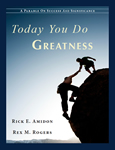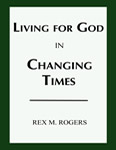If you like politics, especially presidential politics, like I do than you’ll like this book.
I enjoy reading behind-the-scenes stories, ones based on credible evidence, which the author’s provide in spades. My favorite stories herein: how Ronald Reagan taught Bill Clinton how to salute and the way George H. W. Bush conducted himself as a gentlemen during and after his presidency. Something I learned: how far Richard Nixon went during the 1968 presidential campaign (some say to the point of treason) to influence clandestinely the Viet Nam peace talks in Paris and thus the election. This was a precursor to Watergate or at least the unworthy character(s) that caused it.
The President’s Club is a study of the relationships of men who’ve served as President, with each other and with the current occupant of the White House. From Herbert Hoover and Harry S. Truman to Barack Obama and his living predecessors the authors examine how “the club,” this unique and limited number of men (so far) have functioned in a world all their own.
The watchwords of the club are competition, collaboration, and consultation. The club members’ common goals: to preserve the credibility and power of the Office of the President, to protect America, and to advance, as possible, their own reputations and legacies.
Hoover and Truman launched the modern club. Catching their partisan peers off guard they worked successfully in post-war Europe to save the lives of tens of millions of hungry people. Later, at Truman’s behest the Hoover Commission helped transform the Office of the President into a powerful platform for leadership of the Free World. Later still, they surprised themselves and became lifelong friends.
JFK and Lyndon Johnson leaned heavily upon Ike Eisenhower for private consultation about Viet Nam and much more. Nixon was a fatally flawed man, but his brilliant insights involving international relations helped Bush 41, even Clinton. Ford and Carter made amends and worked together off and on for over twenty years; they even tried to rescue Clinton, or at least his office, when Clinton became the second president to be impeached.
Bush 43 kept a public distance (in terms of consultation) from his father during his campaigns and presidencies, yet their relationship as son and father was and is deep and forever. It was 41 who later created the opportunity for 43 and Clinton to partner in humanitarian relief, launching what many and even they call a special “father/son” relationship. Now, it’s Obama and, after a testy time, Clinton, and surprisingly perhaps, Bush 43. President Obama sent Clinton and 43 to Haiti for humanitarian relief efforts that raised tens of millions. The club, all members have found, is useful politically and personally.
There’s something about the job of President of the United States, the crushing responsibility, tension and concern in the face of global threats, the loneliness in leadership that draws all who’ve held the position together. Who else can fully understand? And all, regardless of party and policy want the President and the Nation to succeed. Consequently, the Presidents Club, when it’s at its best, represents one of the blessings of a free, democratic, and peaceful transfer of power.
I thoroughly enjoyed this book and recommend it to anyone interested American politics, the presidency, or leadership.
© Rex M. Rogers – All Rights Reserved, 2012
*This blog may be reproduced in whole or in part with a full attribution statement. Contact Rex or read more commentary on current issues and events at www.rexmrogers.com or follow him at www.twitter.com/RexMRogers.


